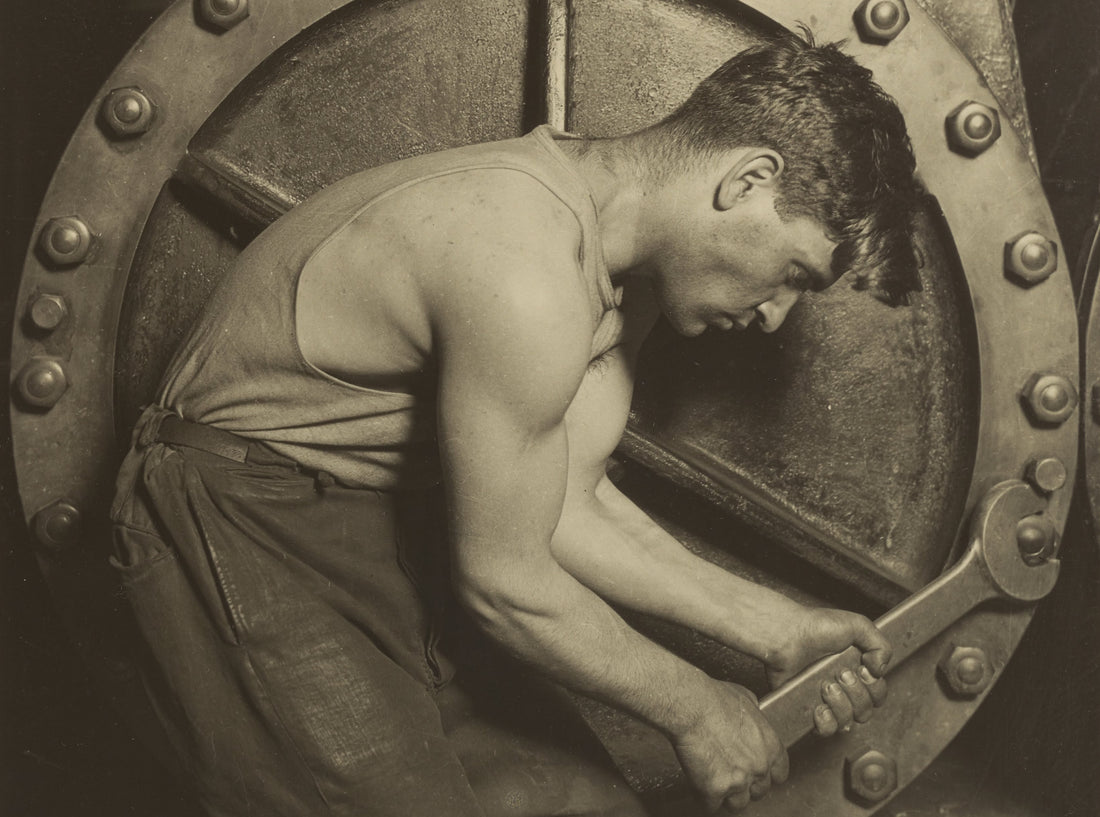The third chapter of The Great Gatsby has to be one of the most complex and beautifully written chapters in all of American literature. The chapter opens with an account of the extensive preparations which set the stage for Gatsby’s parties. Here is the narrator’s description of how the juice at Gatsby’s parties gets prepared:
Every Friday five crates of oranges and lemons arrived from a fruiterer in New York — every Monday these same oranges and lemons left his back door in a pyramid of pulpless halves. There was a machine in the kitchen which could extract the juice of two hundred oranges in half an hour if a little button was pressed two hundred times by a butler’s thumb (39-40).
What happens to human labor in this account of how the juice gets made? What happens to the worker’s body? How might the “machine” that processes hundreds of citrus fruits amount to a metaphor for what happens at Gatsby’s parties?
In the passage quoted above, Fitzgerald frames inanimate objects — that is, fruit and machines — as being the agents of the action. The oranges and lemons “arrived” as if on their own; the machine in the kitchen magically “extract[ed]” the juice; then the oranges “left” after forming themselves into a pyramid shape.
To be sure, a “butler’s thumb” makes a small contribution by pressing a button two hundred times every half hour. But it is telling that this “thumb” is described as if it had become detached from the body and mind of the butler — as if it were separated from the butler’s person, as if it were acting as an agent unto itself. What Fitzgerald has effectively done here is offer a narrative representation of Karl Marx’s theory of “commodity fetishism”: under a capitalist economy, inanimate commodities appear to be endowed with their own agency and inherent value — even as humans are dispossessed of those attributes.
The preparations for Gatsby’s party clearly require an enormous amount of human labor. So what’s most significant about the passage quoted above is that all of the human labor gets effaced. Literary critic Dan Coleman was the first scholar to draw attention to that aspect of the paragraph, observing, “The butler doesn’t press the button; the button is pressed by a butler’s thumb. […] This seemingly explicit account of the origins of the juice consumed at Gatsby’s party obscures entirely the agency of those responsible for making the fruit arrive as oranges and lemons and leave as empty peels” (Dan Coleman, “‘A World Complete In Itself’: Gatsby’s Elegiac Narration.” F. Scott Fitzgerald’s The Great Gatsby: Bloom’s Modern Critical Interpretations. Ed. Harold Bloom. New York: Chelsea House, 2004. 175).
The labor performed by Gatsby’s servants will continue to get effaced long after the preparations for the party are complete. Later in the chapter, the food at the party is described as having been “produced […] out of a caterer’s basket” (43). Do baskets produce food? Hmmm...
The drinks available to Gatsby’s guests are similarly described as appearing out of thin air: “A tray of cocktails floated at us through the twilight and we sat down at a table with the two girls in yellow and three men, each one introduced to us as Mr. Mumble” (43). In this sentence, the tray of cocktails is framed as having the magic ability to “float” through the air even as the waiter who is presumably carrying the tray of cocktails gets rendered invisible.
Karl Marx illustrated his point about commodity fetishism with an anecdote about dancing tables. F. Scott Fitzgerald makes the same point with anecdotes about self-squeezing juice machines and floating cocktail trays.
How might the narrator’s description of the "machine" which transforms fruit into juice resemble the assembly line manufacturing process that was becoming the dominant form of industrial production in the 1920s? Prior to the 20th century, skilled tradespersons such as cobblers and carpenters made use of their whole bodies — not to mention their minds — when creating new commodities such as shoes and tables. But in the first two decades of the 20th century, the invention of the assembly line transformed the conditions of human labor in a radical and irrevocable way.
After the labor process was mechanized, workers on an assembly line used a single part of the body to perform the same action over and over again for the entire workday — week after week, year after year. As a result, workers began to report that they felt as if their bodies were becoming fragmented, separated into discrete parts, and detached from their minds. So Fitzgerald’s analysis of the labor performed by the butler’s “thumb” may amount to a subtle critique of how the mechanization of labor in the modern era could result in such bodily fragmentation and self-alienation.
Finally, how does the role that service labor plays at Gatsby’s party compare with the role that service labor had played in the previous chapter at Myrtle Wilson’s party? Whereas the servants at Gatsby’s party seem to magically disappear, Myrtle Wilson had attempted to make service workers magically appear or materialize.
Although Myrtle does not have enough money to actually hire caterers for her party, she treats the elevator operator as if he were a servant by sending him on a series of errands. First, Myrtle sends the “reluctant elevator-boy” to acquire a “box full of straw and some milk” for her new puppy (29). After sending this elevator operator on a second errand for ice, Myrtle has the audacity to disparage his work ethic, saying, “I told that boy about the ice. [. . .] These people! You have to keep after them all the time” (32). And according to the narrator, Myrtle enters the kitchen as if “a dozen chefs awaited her orders” (32). In these ways, Myrtle attempts to shore up her social status by making it seem as if she were waited on by servants.

Thus, in both party scenes, the treatment of the workers reveals a great deal about the socioeconomic status of the host. At Gatsby's party, the labor performed by the butler and the caterers gets effaced so that the partygoers will not be reminded that their pleasure comes at anyone else's expense. Meanwhile, at Myrtle Wilson's party, the host enlists the elevator operator to run a series of errands — and then complains about his work ethic — in the hope of making it appear that she hails from a higher class status.

Teach It Today!
Teachers who are excited to dig into the complexity of Fitzgerald's novel will definitely want to check out this Complete Teaching Unit on The Great Gatsby. The 200-page resource packet is filled with discussion questions, vocabulary lists, and reading quizzes for every chapter of The Great Gatsby. It features a slideshow on Fitzgerald’s life as well as special-topics worksheets on symbolic settings, literary devices, color symbolism, socioeconomic hierarchies, and lots more!
Save yourself hundreds of hours of prep time while motivating your students to be highly engaged. Check out the Complete Teaching Unit on The Great Gatsby!
Image Credit: Lewis Hine, Mechanic and Steam Pump (1921)

